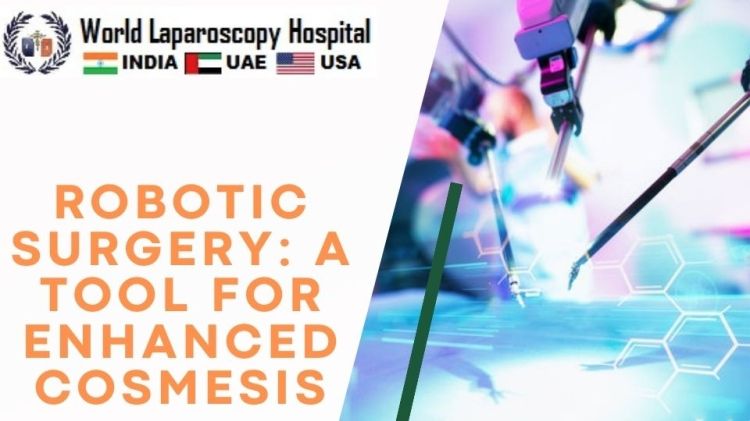Robotic Surgery: A Tool for Enhanced Cosmesis
Introduction
In recent years, robotic surgery has revolutionized the field of medicine, offering a new dimension to surgical procedures. One particular aspect where it has shown remarkable promise is in the realm of enhanced cosmesis. This article delves into the intricacies of robotic surgery as a tool for improving aesthetic outcomes in various medical interventions.

Understanding Robotic Surgery
Robotic surgery involves the use of advanced robotic systems to assist surgeons in performing intricate procedures with precision. These systems typically consist of robotic arms equipped with specialized instruments and a console where the surgeon sits, controlling the movements with high-definition imagery. The collaboration between human expertise and robotic precision has paved the way for significant advancements in various medical disciplines.
Minimally Invasive Surgeries: Reducing Scarring for Enhanced Cosmesis
One of the primary advantages of robotic surgery in the context of cosmesis is its ability to facilitate minimally invasive procedures. Unlike traditional open surgeries that often result in larger scars, robotic-assisted surgeries involve smaller incisions. The robotic arms, guided by the surgeon's precise movements, allow for greater accuracy and control, minimizing tissue damage and reducing the overall impact on the patient's appearance.
Precision in Surgical Procedures
Robotic surgery provides unparalleled precision, surpassing what can be achieved through conventional methods. The robotic arms can make minute movements with a level of control that surpasses the human hand. This precision is particularly crucial in cosmetic surgeries where attention to detail is paramount. Whether it's facial reconstruction, breast augmentation, or body contouring, the robotic system ensures meticulous execution, contributing to superior aesthetic results.
Applications in Plastic and Reconstructive Surgery
In the realm of plastic and reconstructive surgery, robotic assistance has opened up new possibilities. Facial surgeries, such as rhinoplasty or facelifts, demand a delicate touch and precise maneuvers. Robotic arms, with their ability to mimic human hand movements, enable surgeons to perform intricate tasks with enhanced accuracy. This translates to more natural-looking results and shorter recovery times for patients.
In reconstructive surgery, where the goal is often to restore both function and form, robotic systems have shown promise. Whether it's rebuilding a breast after mastectomy or reconstructing facial features following trauma, the precision of robotic surgery contributes to improved cosmesis and better overall patient satisfaction.
The Human-Robot Collaboration
While robotic surgery introduces a technological marvel, it is essential to highlight the collaborative nature of the human-robot relationship in the operating room. Surgeons remain in control, manipulating the robotic arms with a high degree of dexterity. The synergy between human expertise and robotic precision is the key to achieving optimal cosmesis outcomes.
Advantages Over Traditional Approaches
Comparing robotic surgery to traditional surgical approaches underscores its advantages in the pursuit of enhanced cosmesis. The smaller incisions result in less scarring, reduced pain, and quicker recovery times. Additionally, the improved precision minimizes the risk of complications, ensuring that the aesthetic goals of the surgery are met with a higher degree of certainty.
Evolving Technologies in Robotic Surgery
As technology continues to advance, so does the potential for further enhancements in robotic surgery. The integration of artificial intelligence (AI) and machine learning algorithms holds promise for refining surgical techniques and optimizing outcomes. These technologies can analyze vast amounts of data, identify patterns, and assist surgeons in making real-time decisions, contributing to even greater precision and improved cosmesis.
Challenges and Considerations
Despite the numerous advantages, it's important to acknowledge the challenges associated with robotic surgery. The initial costs of acquiring and implementing robotic systems can be substantial, limiting access in some healthcare settings. Training surgeons to operate these systems effectively is also a crucial consideration. However, as the technology matures and becomes more widely adopted, these challenges are expected to diminish.
Patient Satisfaction and Quality of Life
Ultimately, the success of any medical intervention, including those involving robotic surgery, is measured by patient satisfaction and improvements in quality of life. Enhanced cosmesis not only addresses physical appearance but also contributes to psychological well-being. Patients experiencing less visible scarring and faster recovery often report higher levels of satisfaction with their overall surgical experience.
Future Implications and Ethical Considerations
The continued evolution of robotic surgery prompts reflection on its future implications and ethical considerations. As technology advances, questions regarding accessibility, affordability, and ethical use of AI in surgical decision-making will become increasingly relevant. Striking a balance between innovation and ethical considerations is crucial to ensuring that the benefits of robotic surgery are equitably distributed and aligned with the principles of medical ethics.
Conclusion
Robotic surgery stands at the forefront of medical innovation, offering a transformative tool for enhanced cosmesis in various surgical interventions. From minimizing scarring to improving precision in intricate procedures, the collaboration between human skill and robotic technology has opened up new frontiers in medical aesthetics. As we navigate the future of healthcare, the impact of robotic surgery on cosmesis serves as a testament to the potential for technology to enhance both the art and science of medicine.
